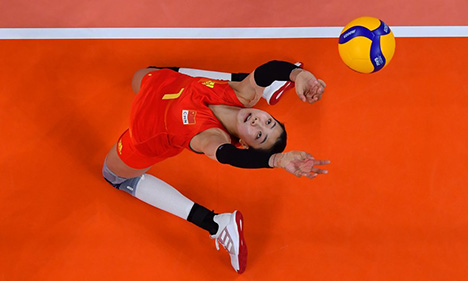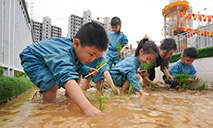Commentary: Dynamic Asia -- a stout tailwind giving world a boost against headwinds
BOAO, China, April 21 (Xinhua) -- Covering an area the size of 70 football fields, one of the world's largest hydro-floating solar farm has been operating in northeastern Thailand for nearly half a year.
The China-assisted integrated floating PV project in Sirindhorn Reservoir, which delivers up to 45 megawatt of power to Thai national grid, has taken the tropical country one step closer to its carbon neutrality target.
This is just a miniature and one facet of the practical cooperation among Asian countries, who have been reaping dividends from productive exchanges against all kinds of headwinds, and embracing increasingly deeper regional integration.
At the ongoing Boao Forum for Asia in south China, solidarity for a shared future has again come under spotlight in an age of uncertainties.
Indeed. Humanity has been tested beyond measure lately year after year by overlapping challenges, old and new, from rising protectionism and ecological degradation to COVID-19 resurgences, the Russia-Ukraine conflict, skyrocketing energy bills and hiking global inflation.
As downside risks weigh heavily against the global outlook for 2022, Asian countries, as they have done in the past, have ample reasons to press ahead with their commitment to common development, economic globalization and free trade.
Just as Chinese President Xi Jinping said on Thursday while addressing the opening ceremony of the Boao Forum for Asia Annual Conference 2022, to break through the mist and embrace a bright future, the biggest strength comes from cooperation and the most effective way is through solidarity.
"Choosing dialogue and cooperation over zero-sum games, openness and inclusiveness over a closed-door and exclusive approach, and exchanges and mutual learning over a sense of superiority: this is the only choice worthy of the broad-mindedness of Asians," Xi said.
Asia remains the key driver of global growth. The continent accounted for 47.3 percent of the global economic aggregate in 2020 at purchasing power parity. The region's GDP is forecast to notch 5.2-percent growth this year and 5.3 percent in 2023, according to an Asian Development Bank report released in early April.
Trade among Asia-Pacific economies amounted to 58.5 percent of the region's total in 2020, the highest level in three decades, bolstering the region's economic resilience amid the COVID-19 pandemic even as mobility restrictions and supply-chain disruptions hampered global trade.
Last year, China and the Association of Southeast Asian Nations (ASEAN) countries marked the 30th anniversary of their dialogue relations. Up till now, China has remained ASEAN's largest trading partner for 13 consecutive years since 2009, and ASEAN China's largest trading partner for two years.
"The large and rapidly growing economies of Asia are increasingly technology innovators, dynamic markets and consumers -- not just passive imitators, manufacturers, processors and exporters to North America and Europe," John Kemp, a Reuters market analyst, wrote in an opinion piece.
Such vibrant growth is underpinned by solidly expanding intraregional trade, the unleashed global pent-up demand, the early economic recovery in China as well as measures to further promote cross-border trade and investment.
The world's largest free trade agreement, the Regional Comprehensive Economic Partnership (RCEP), entering into force right on New Year's Day this year, has been widely expected to create a tailwind for the region's post-pandemic recovery and be a catalyst for global economic progress.
Boasting nearly a third of the world's GDP as well as population, the RCEP will be a boon not only for industry giants and small and medium-sized enterprises inside the mega free trade bloc, but also for countless other businesses and individuals who are intricately woven into the global supply chain.
The promising pact, along with the China-proposed Belt and Road Initiative, among other cooperation mechanisms, has unlocked regional development potential across such fields as infrastructure, green development and digital economy, and translated it into power to mitigate adversities and sustain growth.
Yet there are jarring noises scheming to break the tempo of regional development by discrediting certain initiatives and sowing discord among countries, quite at variance with the current atmosphere of solidarity.
It is therefore more necessary than ever for Asian countries themselves to be soberly aware that they are not "chess pieces" in a geopolitical contest, but crucial "chess players" who will help drive development and prosperity across the region and beyond.
Their effective partnership attests that problems can be fixed through inclusive and equal-footed cooperation that accommodates each other's development interests and says "no" to lip service.
Their joint response to global woes testifies to the commitment to multilateralism and peace, and the shared value of solidarity, the very tenets that underpin such a partnership.
As global recovery is still progressing in fits and starts, Asian countries will, as always, constitute an indispensible stabilizing force as well as an inexhaustible source of development wisdom. ■
Photos
Related Stories
- Boao Forum for Asia to hold annual conference in Spring
- The Boao Forum for Asia, 20 years on: A boost for the development of Asia and the world
- Chinese president to address BFA annual conference
- Interview: Boao Forum for Asia a cohesive unit for betterment of humanity -- Fortescue chairman
- Boao Forum for Asia Secretariat establishes office in Haikou
Copyright © 2022 People's Daily Online. All Rights Reserved.










